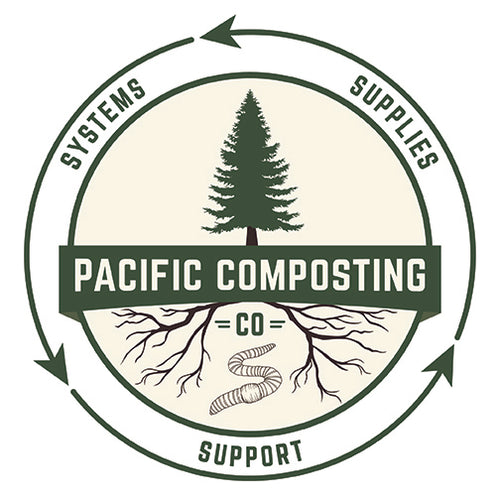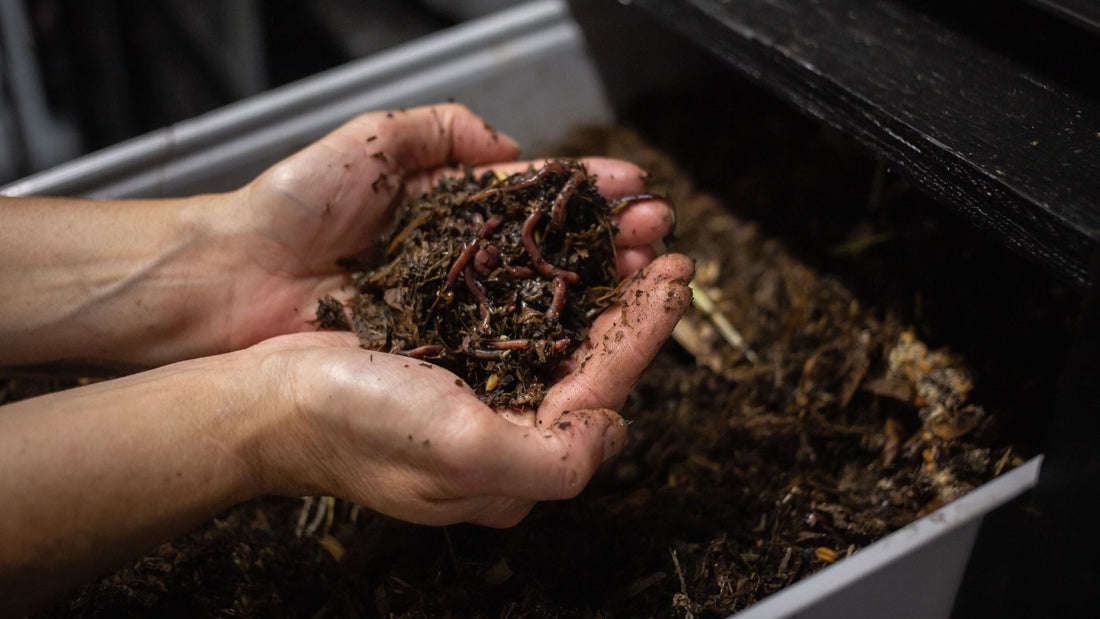Here are some easy ways to keep your worms happy and healthy!
A good rule of thumb is to plan to add your food scraps to the worm bin once or twice a week so you don't disturb them too much! Aim for a ratio of 70% bedding to 30% food As your worm population increases, so should the volume of food you feed them. Worms are known to eat 20-50% of their body weight daily, some believe it's much more. Do keep in mind, however, that there are a wide range of factors that can influence worm feeding, such as temperature (a big one), the types of foods added, moisture content, and air flow.
What to feed your worms (in small to medium-sized bins):
Worms love to eat these foods:
- Fruit (see below for some exceptions)
- Vegetables (see below for some exceptions)
- Paper tea bags
- Coffee filters
- Plants
- Aged manures from horse, cow, sheep, goat and rabbit
Foods that worms will tolerate in moderation only:
- Bread
- Grains
- Cereals
- Tomatoes
- Cooked potatoes
- Potato peels
- Citrus, pineapple, onion and garlic in especially small amounts
Please don't feed your worms any of the following:
- Dairy
- Meat
- Feces
- Oils
- Sauces
- Uncooked potatoes
- Spicy, greasy, salty or fatty foods
- Toxic or diseased plants
Tips for every feeding:
- Fluff up their bedding to avoid having pooling water, clogged air holes or overly wet areas.
- If possible, it is best to cut the food scraps into small pieces. 1-2” pieces are ideal.
- Add the food scraps in a thin layer (no more than 1-2” depending on the size of the worm population) to the top of the bin.
- Add some grit such as oyster shell flour, rock dust, sand or crushed/powdered eggshells. Worms don’t actually have any teeth so - apart from adding valuable minerals to the system - the grit can also aid in worm digestion.
- Some form of “living material” can be a great addition to your feeding routines as well, if you happen to have some available. Common examples include high-quality composts and castings, decomposed leaf litter (“leaf mold”), and well-aged, bedded manures.
- Add a thick layer of cover bedding over every food layer. This will help lock in moisture, as well as discourage pests and excess mold growth. Just generally, it’s a good idea to keep your bedding levels topped up in the system, since the worms will also consume these materials over time.
- Placing a hemp or coco coir blanket directly over your food deposits can further enhance your moisture-retention, and pest-avoidance. Plus, it’s a great way to improve the overall habitat structure of your system.
On a monthly basis, sprinkle pH buffer/grit (roughly 2 tbsp. per square foot) and a cup or more of BioChar in with their food (depending on the size of the system).
pH BUFFER/GRIT
Learn more
BIOCHAR

Biochar will improve the health and reproductivity of worms and create a highly microbially diverse environment in the bin (which is awesome for your worms!). It is another source of grit for worms to aid in their digestion, helps to prevent odours, and will increase air flow and oxygen holding capacity which in turn regulates the humidity in the bin.
Learn more
 FUN FACT:
FUN FACT:
Worms don’t actually consume the food they are fed, but rather they feast on the microorganisms that are breaking down the food!
Helpful Related Resources
What Is “Living Material”?
Adding Eggshells to Your Worm Bin
Bedding - The Most Important Material in Your Worm Bin?
Pumpkins - The Ultimate Fall Bounty For Your Worms
Smelly Worm Bins - Possible Causes & Effective Solutions


